Detroit Pistons: The 12 Most Important Moments in Franchise History
GREG ENO - bleacherreport.com
OCTOBER 28, 2010
With another NBA season upon us, it's time to both look ahead and look back.
The Detroit Pistons moved to the Motor City from Fort Wayne, Indiana, in time for the 1957-58 season. For the better part of the next three decades, success on the court was elusive and the franchise looked downright slapstick at times. After all, this was a team that once made its radio announcer the GM and named a 24-year-old player as its coach.
That all changed in the latter part of the 1980s, when the Pistons became annual championship contenders.
In honor of the 12-man NBA roster, here's a countdown of the 12 Most Important Moments in Pistons History—not including their move from Fort Wayne, which was obviously very important!
No. 12: Pistons Move into The Palace, 1988
1 OF 12
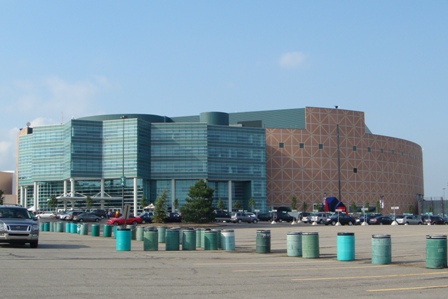
After 10 seasons playing in the cold, cavernous Silverdome in Pontiac as second-class citizens to the Detroit Lions, the Pistons finally had their own home again, after being the primary tenants of Cobo Arena from 1960 to 1978.
The Palace was (and still is) a state-of-the-art arena with beautiful private suites that were ingeniously placed as low as mezzanine level. And bonus: You didn't have to worry about the roof caving in, which happened to the Pistons on several occasions in the Silverdome.
The Palace of Auburn Hills added further glitter to a team that was finally on the NBA map, thanks to multiple Conference finals trips and a berth in the 1988 NBA Finals.
No. 11: Pistons Move into Cobo Arena, 1961
2 OF 12

During their first four years in Detroit, the Pistons shared Olympia Stadium with the Red Wings. This presented several problems—condensation on the court from the ice below, working around the Red Wings schedule, etc.
But nothing could top what happened to the Pistons in March, 1961, when they were forced to play two nationally televised playoff games in a Grosse Pointe high school gym, thanks to prescheduled events at Olympia.
That all went away when the Pistons moved into brand-new Cobo Arena, a round structure on Detroit’s Riverfront, in time for the 1961-62 season.
Finally, the Pistons had their own home—their first in Detroit.
Cobo seated about 12,000 for basketball—not that the Pistons needed it, because they struggled to draw 5,000 on most nights—and the arena became a legendary concert venue.
The Pistons played there until 1978, when they moved into the Pontiac Silverdome.
No. 10: Isiah Thomas Scores 16 Points in 90 Seconds in the 1984 Playoffs
3 OF 12
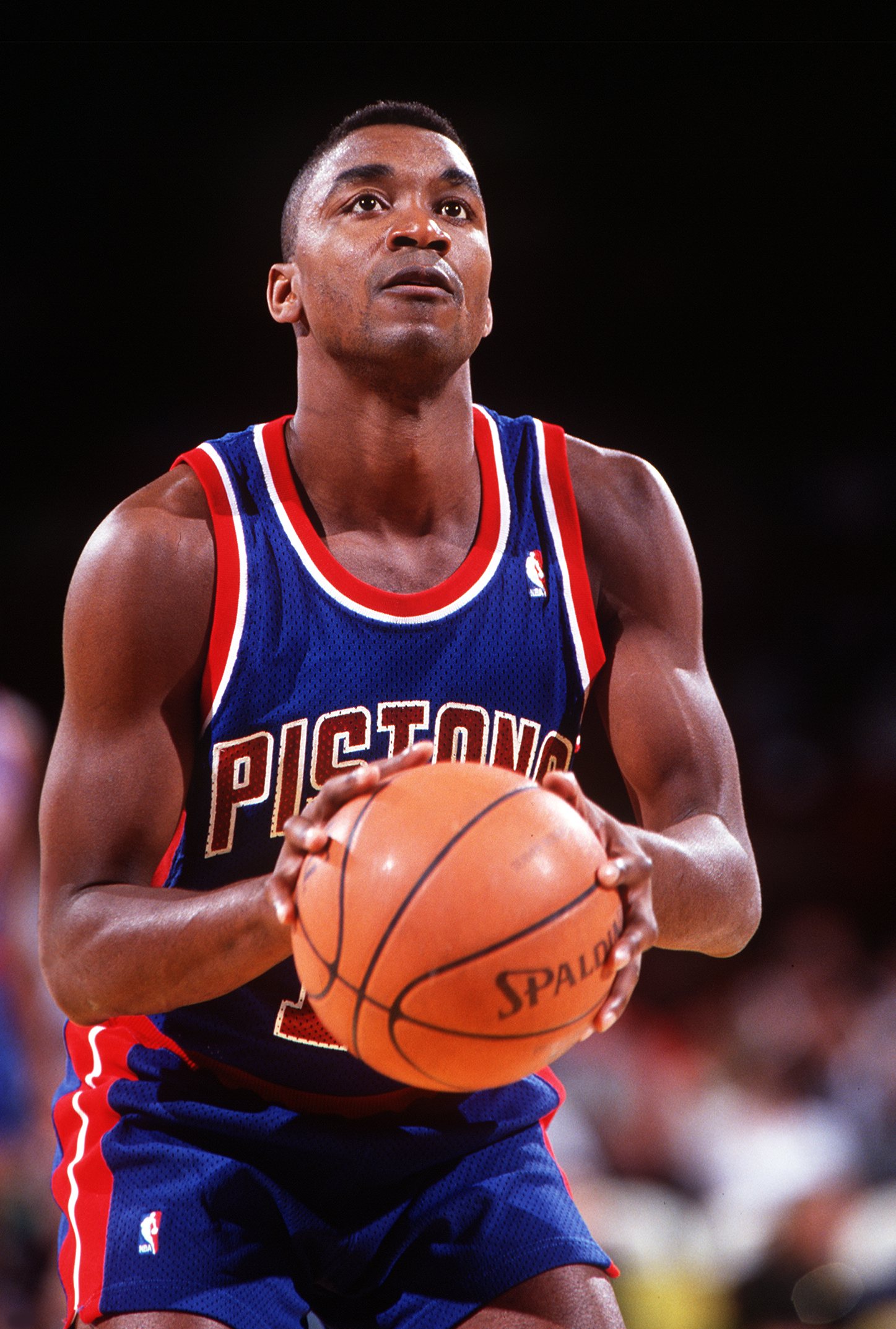
Tim DeFrisco/Getty Images
In April, 1984, the Pistons were in the playoffs for the first time in seven years. In a first-round matchup against the New York Knicks, the Pistons split the first four games.
But they weren’t able to figure out New York’s Bernard King, who was averaging about 40 points per game.
The deciding Game 5 was played at Joe Louis Arena because the Silverdome was booked. Once again, the Pistons were bumped out of their usual home gym for a crucial playoff game.
Isiah Thomas, in the heat and humidity of the Joe, led the Pistons back from a 10-point deficit with under two minutes to play.
Firing in triples, layups and turnaround jumpers—and using his quick hands to steal several balls—Thomas scored 16 points in 90 seconds to send the game into overtime.
But in OT, it was King (of course) who turned the momentum around with a monstrous put-back slam dunk to put the Knicks ahead. Thomas fouled out, walking off the court to a thunderous ovation.
I was in attendance that night. To this day, NBA observers call that game one of the best postseason games ever played—certainly of any that was played in April.
No. 9: Pistons Beat Star-Studded Lakers in 2004 Finals
4 OF 12
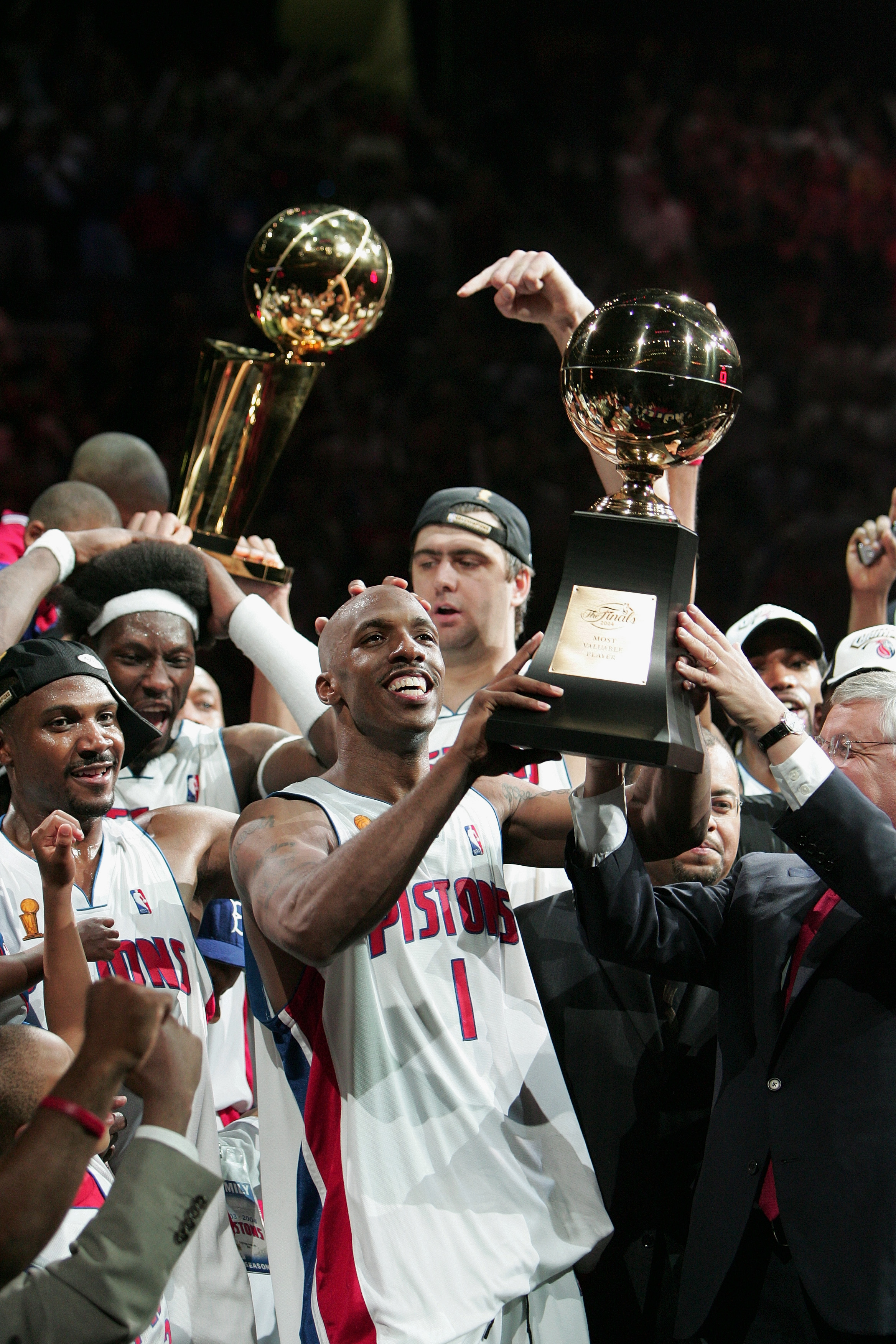
Jed Jacobsohn/Getty Images
It was supposed to be a New World Order (it wasn’t) when the Pistons won the 2004 NBA Championship in a stunning five-game upset over the Los Angeles Lakers.
The superstar-less Pistons beat the Lakers of Kobe, Shaq, the Mailman and Gary Payton in what some call a “Five-Game Sweep” because only Bryant’s miraculous triple at the end of regulation saved Game 2 for the Lakers, who won it in overtime.
The Pistons, a bunch of good but not great players who played stifling defense, were supposed to change the way NBA teams were built. Coaches everywhere pointed to the Pistons as an example of true team play.
Alas, the Pistons’ 2004 title proved to be nothing more than an aberration. The superstar theory still rules in the NBA.
No. 8: Pistons Finally Slay the Celtics, 1988
5 OF 12
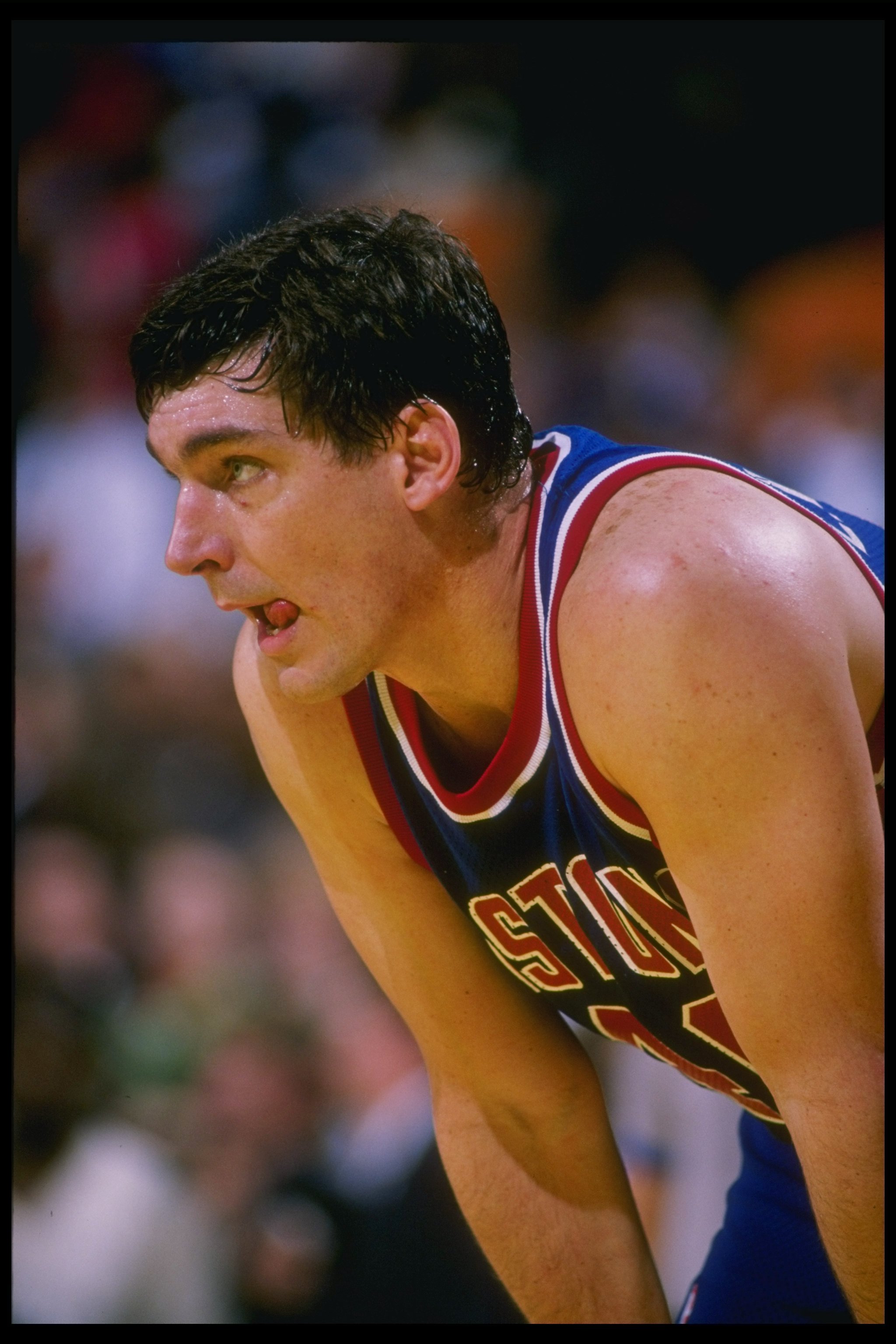
Jonathan Daniel/Getty Images
Captain Ahab had Moby Dick. The Pistons had the Boston Celtics.
The Celtics beat the Pistons in the playoffs in 1985 (second round) and 1987 (Conference finals, thanks largely to Larry Bird’s steal at the end of Game 5).
In the late 1980s, it was clear that if the Pistons were ever going to appear in the Finals, they’d have to go through the Celtics first.
In the 1988 Conference finals, the teams split the first four games, each winning both home games.
The Pistons trailed late in the third quarter of Game 5 by 10 points. But led by Isiah Thomas, Vinnie Johnson and Bill Laimbeer’s shooting, the Pistons whittled away at the deficit and eventually won—their first win in Boston in some seven years.
That set the stage for Game 6 at the Silverdome. Laimbeer entered the Dome that night carrying a duffel bag. Inside was a toy sickle, though he didn’t reveal the contents to reporters until afterward.
“To kill a snake you have to cut off its head,” Laimbeer explained about the symbolism of the sickle, which he had shown to teammates before the game.
The Pistons raced to a large lead in the fourth quarter, but the Celtics crept back in—slithered, rather, like a snake. But the Pistons held on. At the final buzzer, fans streamed onto the court as if the Pistons had won the NBA Championship.
The Pistons were going to their first Finals. They had finally conquered the Celtics!
***
No. 7: Pistons Trade Grant Hill to Orlando for Ben Wallace, Chucky Atkins
6 OF 12

Robert Skeoch/Getty Images
After Joe Dumars retired from playing in 1999, he served a one-year apprenticeship in the Pistons front office. Then he took over as president in 2000.
He was hit with a challenge from the get-go: Grant Hill wanted out of Detroit.
Hill was the Pistons’ only real marketable player. He played the 2000 playoffs on a mangled ankle. But after six seasons, he was ready for new surroundings.
Dumars engineered a sign-and-trade with the Orlando Magic, who wanted Hill badly to pair with Tracy McGrady. The Pistons got little-known, defensive-minded center Ben Wallace, and scowling guard Chucky Atkins.
What a lopsided trade—for the Pistons!
Hill played four games for the Magic in 2000-01, and would rarely play for them over the next several seasons due to injuries.
Meanwhile, Wallace and Atkins were the first two pieces of the puzzle that would include Chauncey Billups, Rip Hamilton and Tayshaun Prince (among others) to form the nucleus of the 2004 championship squad.
***
No. 6: Pistons Repeat and Win 1990 NBA Championship
7 OF 12
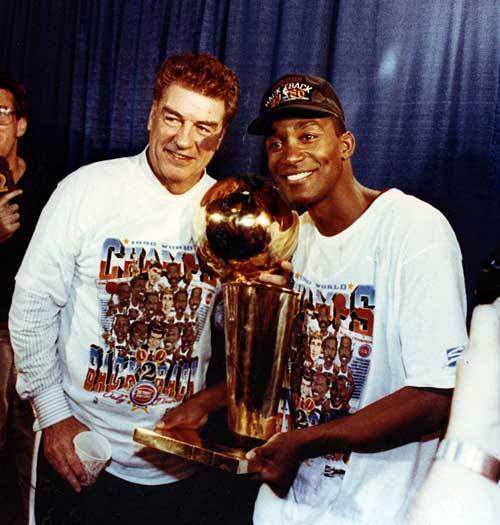
Winning one NBA Championship means you were great—for one season. Winning two in a row puts you on a different plane.
So when the Pistons beat the Portland Trailblazers in the 1990 Finals, it put them in the conversation with teams like the Lakers and Celtics when the topic was league greatness.
And the Pistons did it the hard way, winning three straight games in Portland, where they hadn’t won at all since 1974.
“Last year’s championship was for the fans,” Bill Laimbeer said through the champagne in the locker room following the clincher. “This one’s for us.”
Indeed.
No. 5: Pistons "Bad Boys" Win First-Ever NBA Title, 1989
8 OF 12

The Pistons lost an angry, gut-wrenching seven-game Finals to the Lakers in 1988, after winning Game 1 in Los Angeles, and after a phantom foul on Bill Laimbeer late in Game 6 that changed the tide.
They entered the 1988-89 season with one goal and one goal only: to win the championship. Anything less was unacceptable.
The Pistons ran roughshod over the NBA, winning 63 games and then going 15-2 in the playoffs—both losses coming to the Chicago Bulls in the Conference finals. Not even a late-season, controversial trade of Adrian Dantley for Mark Aguirre could derail the driven Pistons.
The Pistons “Bad Boys” then swept their nemesis from Los Angeles in the Finals. The Lakers started the series without Byron Scott, and ended it without Magic Johnson. Still, the Pistons were arguably the better team.
It was the franchise’s first championship.
No. 4: Pistons Hire Chuck Daly as Coach, 1983
9 OF 12
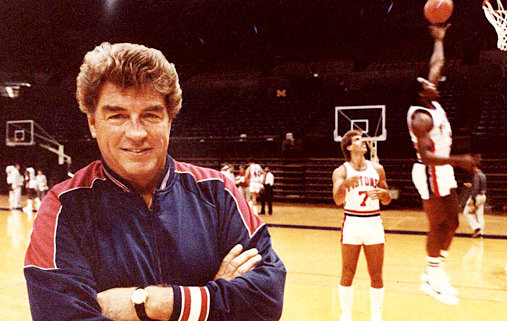
The Pistons had young stars in Isiah Thomas and Kelly Tripucka, and other pieces like Bill Laimbeer and Vinnie Johnson. But they were an under-.500 team after two seasons with the new blood.
GM Jack McCloskey fired coach Scotty Robertson, and after two guys turned him down (including Dr. Jack Ramsay), Jack hired Chuck Daly in May 1983.
Daly’s resume was less than impressive.
Daly coached Penn—as McCloskey himself had years prior—and his only NBA experience was as an assistant with the 76ers and a disastrous stint as coach of the Cleveland Cavaliers.
He also had done some radio work for the 76ers. Not exactly the makings of a Hall of Fame coach, right?
All Daly did was handle his players’ egos wonderfully, average about 50 wins a season for nine years and win two NBA Championships.
Not that any of us could see that coming in May of ’83.
No. 3: Pistons Draft Dave Bing, 1966
10 OF 12
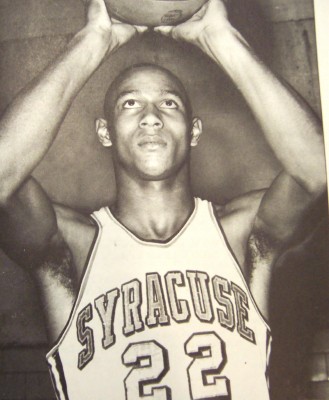
The Pistons were a disaster of an organization in the summer of 1965. They didn’t win on the court, and were slapstick off it.
This was a team that once made its radio guy the GM, and who named a 24-year-old player the coach as well.
But playing 45 minutes west of Detroit, in Ann Arbor, was Michigan superstar Cazzie Russell. Russell was entering his senior season and he had NBA teams drooling. All the Pistons had to do was finish last in their division, win a coin flip with the last place finisher of the other division, and Russell would be theirs.
And the Pistons were certainly capable of such a dreadful record.
The Pistons finished 22-58, and the Eastern Division's New York Knicks finished 30-50. Despite the eight-game differential, there was a coin flip anyway to determine who would get the No. 1 overall pick and, by extension, forward Cazzie Russell.
The Knicks won the flip and picked Russell.
The Pistons, slugged in the gut, “settled” for a skinny guard from Syracuse named David Bing.
“Don’t worry,” former Pistons player and then-scout Earl Lloyd told his co-workers. “We just got the best player in the country.”
Lloyd was perhaps right; Bing won Rookie of the Year honors, led the league in scoring in his second season and almost single-handedly put the Pistons on the NBA map. Bing brought fans, slowly but surely, to Cobo Arena.
Bing then combined with center Bob Lanier (drafted in 1970) to form an inside-outside duo matched by precious few teams. The 1973-74 Pistons won 52 games and, if it wasn’t for a seventh-game loss to the Bulls in the playoffs, the Pistons might have gone to the Finals.
I once mentioned to Ray Scott, who coached that team, that 10-year-old Greg Eno cried the day the Pistons lost Game 7 in Chicago in 1974.
“Greg, my players cried, too,” Scott told me.
Dave Bing was the second-most important draft pick in Pistons history. Who was ahead of him? Keep reading.
No. 2: Pistons Hire Jack McCloskey as GM, 1979
11 OF 12

December 11, 1979 is one of the most important dates in Pistons history.
For on that date, the Pistons, acting on a tip from recently fired coach Dick Vitale, hired a grizzled old basketball guy named Jack McCloskey to run their team.
Vitale urged the Pistons to call McCloskey, who at the time was an assistant to Indiana Pacers coach, Slick Leonard.
McCloskey was an Ivy League guy who coached Penn and Wake Forest in the 1960s, with a good deal of success. Then McCloskey became the coach of the still-new Portland Trailblazers in 1972.
He was fired just before the Blazers drafted Bill Walton. Talk about bad timing.
From there, McCloskey became an assistant with the Lakers under coach Jerry West.
Then it was on to Indiana, where he was working when the Pistons called.
“I thought they were wanting me to be the coach,” McCloskey once told me. “But then they started talking about the GM job.”
McCloskey was interested, but the Pacers wouldn’t let him leave. Eventually, they did, and McCloskey became the Pistons GM.
The 1979-80 Pistons would lose 66 games and McCloskey found the cupboard bare, thanks to Vitale’s mismanagement of the team’s draft picks. That, plus his two star big men—Bob Lanier and Bob McAdoo—both wanted out.
Lanier was tired of the losing, and McAdoo, in his first season in Detroit, felt the woeful Pistons to be beneath him.
McCloskey traded Lanier to Milwaukee in February 1980 for Kent Benson and a first-round draft pick, and rid himself of McAdoo a year later.
McCloskey’s dream was that the Pistons would, sometime in the late-1980s, battle his old team, the Lakers, in the Finals. His dream seemed to be of the pipe variety.
But “Trader Jack” used draft picks and wily trades to cobble together a squad that emerged as the dominant team of the late-1980s, after all. And the Pistons, indeed, played the Lakers in the Finals—twice.
If the Pistons hadn’t hired Jack McCloskey in December 1979, there’s no telling where they’d be today. Maybe not even in Detroit. No joke.
No. 1: Pistons Draft Isiah Thomas, 1981
12 OF 12

McCloskey’s first two Pistons teams won 16 and 21 games, respectively. They were still a work in progress, and they needed a superstar.
Meanwhile, 20-year-old point guard Isiah Thomas was leading Indiana University to the 1981 NCAA Championship with his brilliant passes and clutch shooting.
McCloskey knew that a player of Thomas’ brilliance was just what the Pistons needed.
The so-called “experts” held that you couldn’t build a championship team around a point guard—much less one who was all of 6’1”.
McCloskey all but said, “Watch me.”
The Pistons had the second overall pick in 1981. The Dallas Mavericks would draft ahead of them, and they were also interested in Thomas, as well as DePaul’s Mark Aguirre, who grew up with Isiah on the streets of Chicago.
McCloskey entered into contract negotiations with the agents of both players, just in case.
But the Mavs went with Aguirre, and the Pistons snapped up Thomas.
Later in the first round, the Pistons drafted scoring forward Kelly Tripucka out of Notre Dame.
Together, the Pistons’ rookies led the team to an 18-win improvement in their first season. Two years later, the Pistons started a streak of nine straight playoff appearances.
Tripucka was dealt to Utah in 1986 for Adrian Dantley, who was then traded in a controversial deal for (drum roll please) Aguirre in February 1989. The Pistons became NBA champions four months later.
Dave Bing helped make the Pistons relevant. Isiah Thomas made them champions.
The Pistons' drafting of Thomas is the most important moment because Isiah, more than any single player, helped instill a winning culture into a near-moribund franchise. And this culture still exists, despite some rough patches, because the two NBA Championships Thomas's Pistons won raised the bar for the organization.
The 2004 Championship re-instilled it, but Isiah's leadership struck first, and hardest.


Commenti
Posta un commento